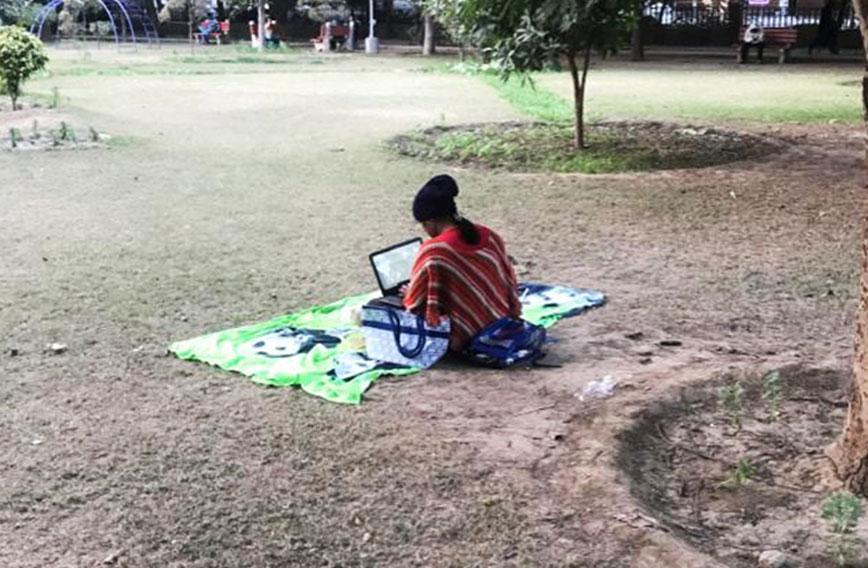
KIRAN KARNIK
A description of our present situation could well be “so near and yet so far”. Locked-in and in quasi-quarantine, we are unable to meet even those friends and colleagues who live close-by. COVID-19 has forced us to be home-bound and to shun close contact with anyone outside the household. Strangely, though, as we remain confined, the precise opposite of the opening phrase is also true: “So far and yet so near.” Friends and colleagues —some from our distant past — living in other countries or faraway places are re-establishing contact through the wonders of technology.
Work-from-home (WFH) has become a necessary norm for many millions. With social distancing and practically a curfew (for all but essential workers), organizations have had to re-work their processes and try to keep things going through WFH. Obviously, this is feasible only for those functions that do not require physical presence (as, for example, shop floor workers in a manufacturing plant). For those in WFH mode, there is need to access information and connect with colleagues, customers and suppliers. This requires connectivity and, most often, access to the organization’s data servers or computers. Modern technology provides this through reliable and — where required — high-bandwidth links.
Work inevitably involves meetings and discussions. Since these are no longer possible in person, the only way is to do this electronically. In theory, a call over the phone may meet the need, and a conference call – with multiple participants – makes a larger meeting possible. However, this often feels inadequate. Video-conferencing (v-c) provides the answer, fulfilling the need to see the other participants. Many platforms now make possible such video-conferencing using a lap-top computer, or just a smartphone. Not only can you have multiple participants, but one can see all of them simultaneously. Unbelievably, this is free: you only pay (to your telecom service provider) for the data that is used.
In these days of a near-global lockdown, the popularity of these v-c services has exploded. Little wonder that while most businesses are down, these v-c platforms are doing well. When last checked, the market valuation of Zoom Communications — one of the popular platforms — had zoomed to $38 billion! Apart from work meetings, these v-c platforms are now being widely used for connecting with friends and family. The technology is not new, but with time on their hands, more are now convening such groups for a chat, or even for virtual parties.
Like WFH, another functionally important application of various e-services is online learning. With schools and colleges closed, many institutions are now scheduling regular classes for students through various online apps. The foundations for this were laid many years ago with organizations offering online courses, coaching and tuition. Some have made a lucrative business of it (for example, Byjus in India), while others provide free courses.
Online ordering of food and goods has been around for long, but has now attained special value when one does not have the alternative of going out. Many may miss the touch and feel of items, or the pleasure of bargaining with the vegetable vendor, but certainly welcome the escape from pollution, from the hassle and time factors of commuting, or of looking for a parking slot.
While the lockdown is a temporary measure, the use of WFH and online functionalities, now experienced more widely and deeply than before, are likely to bring about some permanent changes. While there are some downsides, organizations and individuals will begin to see the many advantages too. Three decades ago, the Indian IT industry created a new business model through off-shoring: doing work in India for organizations in Europe and the US. This established the basic concept of working from a distance, making use of communication technology. WFH is only a continuation. However, if it does take root, it holds the promise — and threat — of creating important changes in how we work and live.
First, commuting to office may well be once a week instead of once a day. Second, there will be greater flexibility in working hours. Third, by choice or otherwise, part-time work may increasingly be the norm and the so-called gig economy may be here sooner than we thought. Fourth, all this may draw more women into the workforce, enabling them to take up a paid job, even as they grapple with a myriad of household tasks that make them superwomen. This will have societal impact in terms of gender and inter-generational relations, as also for inclusivity. As many studies have shown, getting the many house-bound women into the paid workforce will give a big boost to India’s economic growth. Fifth, WFH can be the trigger to decentralize and move a lot of work to smaller towns and even rural areas, taking work to people instead of vice versa. Last, and vitally, all this requires a robust communication infrastructure: reliable, secure and constantly upgraded to keep up with the best. Hopefully, need and demand will catalyze this.
The enablement of part-time work due to WFH has multiple implications, some good and others worrisome. One likely consequence is a change in employment terms, with companies treating a lot of their workers as “independent contractors”: the employment mode used for drivers of taxi aggregators and delivery agents of food/goods delivery companies. This would mean no job or income guarantee, and no social security. Already, a vast majority of even full-time workers in the informal or unorganized sector face these challenges. It is essential that the State provide guaranteed healthcare, children’s education, unemployment allowance or minimum income and pension on a universal basis. If necessary, databases of Aadhaar, socio-economic census, MGNREGA, mobile phone subscription and bank accounts can be accessed (with due regard for data privacy) to target specific individuals or groups and transfer money directly to their accounts.
Whether with regard to WFH or other things, technology throws up new problems, but also provides solutions, in a constant upward spiral. E-proximity in an age of social distancing! n
Kiran Karnik is an independent strategy and public policy analyst. His recent books include eVolution: Decoding India’s Disruptive Tech Story (2018) and Crooked Minds: Creating an Innovative Society (2016).
Comments
Currently there are no Comments. Be first to write a comment!




